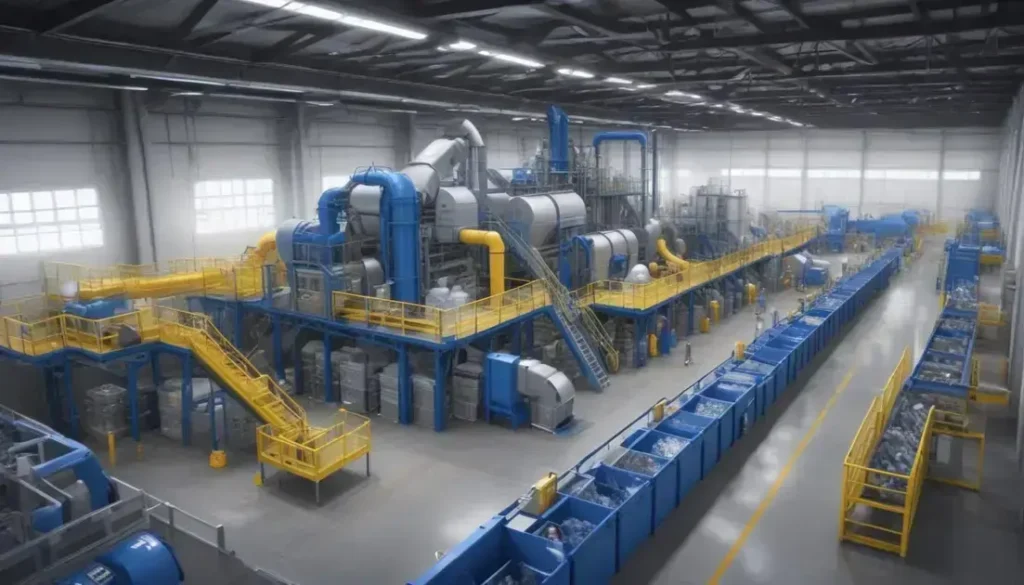Sustainable building materials significantly reduce the environmental impact of construction by utilizing recycled resources, minimizing carbon footprints, and promoting energy efficiency, thereby supporting low-carbon construction practices essential for a greener future.
In recent developments, sustainable building materials are gaining traction, especially as Fiber Global announces a significant funding round aimed at advancing eco-friendly practices.
Fiber Global’s funding and its significance
The recent funding round for Fiber Global marks a pivotal moment in the evolution of sustainable building materials. This financial boost will enable the company to enhance its innovative technologies that focus on low-carbon solutions. Investors are increasingly recognizing the importance of eco-friendly materials, which play a crucial role in tackling climate change.
Fiber Global’s commitment to using recycled materials in construction is not just beneficial for the environment; it also provides significant cost savings for builders and developers. By reducing the demand for virgin resources, companies can lower their carbon footprints while saving on expenses.
Furthermore, this funding will support research and development, helping Fiber Global to expand its product line. The exploration of new sustainable materials, such as bio-based composites and energy-efficient insulation, will allow the construction industry to shift towards more sustainable practices. This shift is vital as governments enforce stricter regulations and consumers increasingly demand environmentally responsible options.
As businesses and consumers alike prioritize climate-friendly solutions, Fiber Global’s efforts demonstrate a groundbreaking shift in traditional construction methods. By showcasing innovation and sustainability, the company is paving the way for greener building practices in the industry.
Overview of sustainable building materials
Sustainable building materials are crucial in the quest for environmentally friendly construction. These materials, which include recycled products, renewable resources, and low-emission options, significantly reduce the overall impact on the planet. By incorporating such materials, the construction industry can contribute to a more sustainable future.
Types of Sustainable Materials: Common examples include reclaimed wood, bamboo, straw bales, and recycled steel. Each of these materials offers unique benefits, such as enhanced durability and lower carbon emissions during production. Additionally, the use of low VOC (volatile organic compound) paints and finishes can improve indoor air quality.
Implementing sustainable materials often leads to cost savings in the long term. These materials can increase energy efficiency and reduce waste, leading to lower operating costs over the lifespan of the building. Furthermore, many green materials offer superior insulation properties, lowering heating and cooling expenses.
Government incentives and increasing consumer demand are driving the adoption of sustainable materials in construction. As awareness of environmental issues rises, more builders are prioritizing these materials to meet regulatory standards and customer expectations.
The environmental impact of recycled materials
The use of recycled materials in construction has a profound environmental impact. By diverting waste from landfills, these materials significantly reduce the demand for new resources. This reduction in resource extraction leads to decreased energy consumption and lower greenhouse gas emissions, providing a vital contribution to combatting climate change.
Life Cycle Assessment (LCA) studies have shown that recycled materials often require less energy for production compared to their virgin counterparts. For instance, recycling steel uses around 75% less energy than producing new steel from raw materials. This efficiency not only conserves energy but also minimizes environmental degradation associated with mining and processing.
Additionally, utilizing recycled materials helps in preserving natural habitats and ecosystems. As fewer raw materials are harvested, there is a reduced likelihood of deforestation and habitat destruction. This shift promotes biodiversity, allowing for a healthier ecological balance.
Moreover, incorporating recycled materials can enhance the sustainability of a building. Structures constructed with recycled components often achieve higher sustainability certifications, which can be attractive to environmentally conscious consumers and investors. Overall, the environmental benefits of recycled materials extend far beyond individual projects, contributing to a global initiative towards a greener future.
Business implications for Canadian construction companies
The rise of sustainable building materials presents significant business implications for Canadian construction companies. By integrating these materials into their projects, firms can reduce their environmental impact while also tapping into a growing market demand for eco-friendly construction practices.
Cost efficiency is one of the major benefits. Although the initial investment in sustainable materials may be higher, the long-term savings associated with energy efficiency and reduced waste disposal fees can be substantial. Additionally, many sustainable options can enhance the durability and lifecycle of buildings, reducing maintenance costs.
Canadian regulatory frameworks increasingly favor sustainability. Compliance with local and national environmental regulations is becoming more stringent, pushing construction companies to adapt. By proactively incorporating sustainable practices, companies enhance their compliance capabilities, thus avoiding potential penalties.
Moreover, public perception plays a crucial role. Consumers are more inclined to choose companies that prioritize sustainability. This shift in consumer behaviour can lead to increased demand for buildings constructed with sustainable materials, ultimately boosting a company’s competitive edge in the marketplace.
Finally, as the construction industry evolves, companies that embrace sustainable building practices will not only improve their operations but also contribute positively to the wider goal of reducing carbon emissions and promoting long-term environmental stewardship.
Future trends in low-carbon construction
The future of low-carbon construction is poised for transformative changes as technology and sustainability converge. As awareness of climate change increases, builders and developers are seeking innovative solutions to minimize their carbon footprints. This trend is evident in the growing adoption of green materials and practices.
One key trend is the use of advanced building materials, such as bioplastics and geopolymer concrete, which offer lower environmental impacts compared to traditional materials. These innovations not only reduce emissions but also improve the overall performance of structures.
Furthermore, digital technologies are revolutionizing construction through processes like Building Information Modeling (BIM). This technology enables better planning, reducing waste and energy consumption throughout a building’s lifecycle. By leveraging data, companies can optimize designs to achieve greater efficiency.
Another significant trend is the emphasis on energy-efficient practices during both construction and operation. Incorporating renewable energy sources, such as solar and wind, directly into building designs further enhances sustainability. Builders are increasingly focusing on creating structures that produce more energy than they consume.
Overall, the trends in low-carbon construction reveal a shift towards smarter, more sustainable practices, aligning with global goals to combat climate change and promote greener urban development.
In conclusion, the path to sustainable construction
The shift towards sustainable building materials and low-carbon construction practices is essential for the future of the environment. As more Canadian companies recognize the importance of sustainability, they can reduce their carbon footprints while improving their bottom lines.
By embracing innovative technologies, utilizing recycled materials, and focusing on energy-efficient practices, the construction industry can play a crucial role in combating climate change.
Investing in sustainable practices not only helps the planet but also attracts environmentally conscious consumers and enhances a company’s reputation. As the demand for green buildings continues to grow, now is the time for businesses to act.
Ultimately, adopting sustainable construction methods is not just a trend; it is a vital step towards a healthier planet and a more responsible industry.
Frequently Asked Questions
What are sustainable building materials?
Sustainable building materials are products used in construction that have a lower environmental impact. They include recycled products, renewable resources, and materials that are energy-efficient.
Why is low-carbon construction important?
Low-carbon construction is crucial because it helps reduce greenhouse gas emissions, combat climate change, and promotes more sustainable practices in the building industry.
How can Canadian construction companies benefit from sustainable practices?
Canadian construction companies can save costs in the long term, comply with regulations, and attract environmentally conscious consumers by adopting sustainable practices.
What role does technology play in sustainable construction?
Technology, such as Building Information Modeling (BIM) and advanced materials, enhances efficiency, reduces waste, and supports the development of energy-efficient buildings.
What is the future of low-carbon construction?
The future of low-carbon construction involves increased innovation, the use of renewable materials, and a greater emphasis on energy efficiency to create greener buildings.
How can businesses start implementing sustainable building practices?
Businesses can begin by conducting assessments to identify areas for improvement, investing in sustainable materials, and incorporating energy-efficient technologies into their projects.


